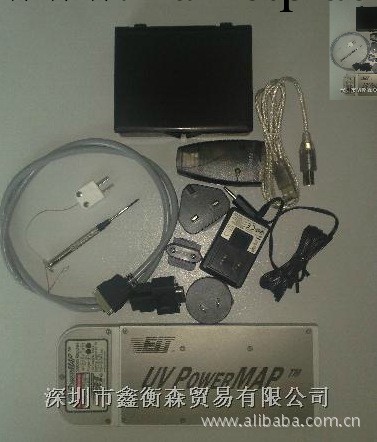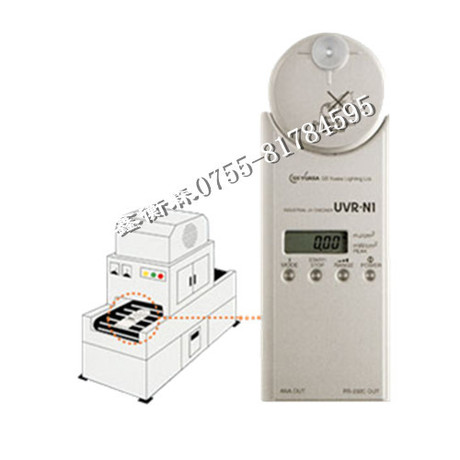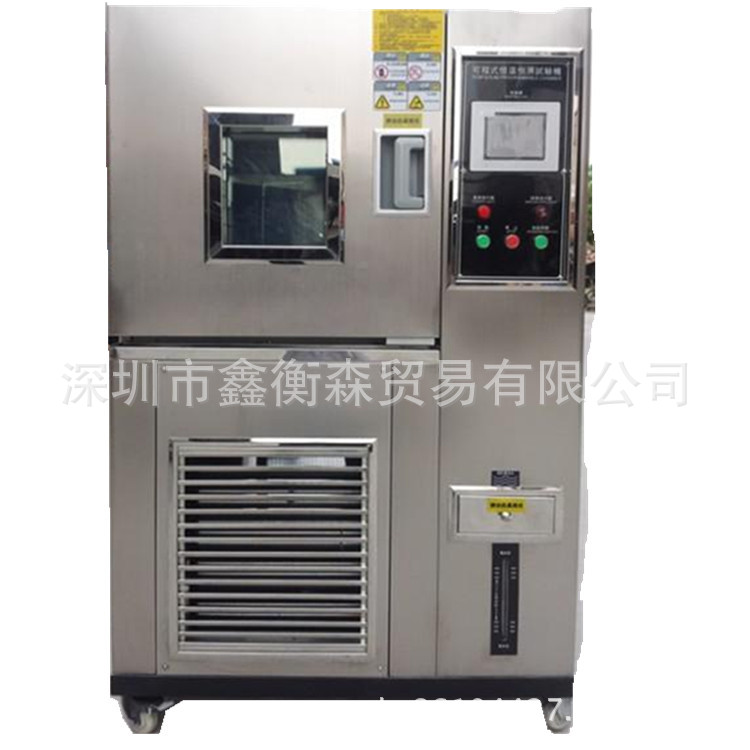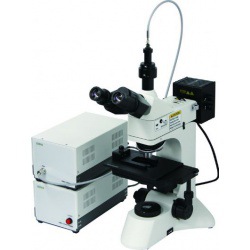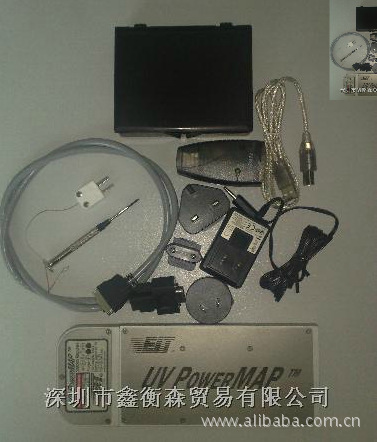
信息內容:
EIT PowerMap能量計測量並且圖解的UV光強表示為時間的函數(W/cm2);UV PowerMAP可同時測量4個光波段的UV能量密度(J/cm2),UV Map Plus隻能測量一個光波段;
檢測系統的焦距,監測產品使用環境的溫度狀況;
比較多個燈的特征;
比較單個UV系統在不同時間的表現,或者比較不同系統;
使用PowerView軟件查看、分析、操作、儲存數據(數據以圖表方式顯示和儲存)
Features (Benefits) :-
| Application :-
|
Introduction
EIT's UV PowerMAP and UV MAP Plus are advanced measurement systems that measure and store UV energy, UV irradiance, and temperature information derived from their optics and thermocouple probes in UV curing processes. The UV PowerMAP simultaneously measures all four UV channels while the UV MAP Plus measures one channel.
The information is transferred to a PC wher it is presented in graph and data format for viewing and analysis. The information is characteristic of the same energy and irradiance that would be impinged on an actual work piece passing through the curing process.

The UV PowerMAP and the UV MAP Plus are the ultimate tools for developing, monitoring, and maintaining UV curing processes. UV formulators, raw material suppliers, and equipment suppliers can take advantage of the UV PowerMAP's ability to measure all four UV channels to develop processes that are easily transferred from a laboratory to a production environment. The UV MAP Plus monitors the one UV channel specified (A, B, C, or V) when it is ordered. The UV MAP Plus was designed more for use on a production floor, and it is an economical alternative to the UV PowerMAP. With the PowerView software, the UV PowerMAP and the UV MAP Plus offer far greater resolution, data sampling, data storage, and data manipulation than previously available in mapping systems.
Variables such as reflector materials, reflector shapes, wavelength-specific reflector degradation and uniformity, and lamp focus can be documented. Companies using multi-lamp curing systems and those that are using different spectral lamps within a system will find these radiometers indispensable.
The UV PowerMAP and UV MAP Plus systems are composed of a data collection unit, detachable optic measurement head, and PowerView software package. The units measure UV energy in Joules/cm2 and UV irradiance in Watts/cm2. With PowerView, UV sample rates are adjusted from 128 to 2048 samples per second to match resolution and information requirements.
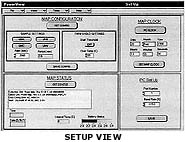
PowerView uploads and displays the collected UV system data, unit configurations, and time/date stamps. This data is saved as a computer file that can be manipulated, customized, and exported into a spreadsheet by the user so the entire UV system can be evaluated.
Operation
The UV PowerMAP and UV MAP Plus are initially configured at the factory before they are shipped. Settings are easily viewed and changed in a Setup screen in PowerView. In Setup, the user can set the unit's configuration to best match the lamp system and get the desired data. The channels that are enabled, the time and date settings, port settings, and the UV sample rate are easily changed with the click of a mouse. The unit's maximum sample rate of 2048 samples/second and its ability to store up to I million data points ensures accurate and sharp resolution - even at high speeds.
The user inserts the unit into a stationary or conveyorized UV process for data collection in the same manner that an actual work piece would be inserted. The unit's low, narrow profile of only 0.5"H x 3.5"W allows usage in a wide range of demanding physical environments. The unit's optics are offset so it can collect data at the ends of the bulbs wher lamp degradation tends to occur first.

Upon exiting from the curing environment, the unit is connected to a PC serial port via cable so that the "run" information can be uploaded into the PowerView application software.
The data transfer is initiated in PowerView's Transfer View screen, wher the unit configuration and transfer progress are displayed. The user can enter information such as line speed, amp readings, lamp settings, types of bulbs, and any other information relevant to the run. The user can also see a preliminary view of the plot. A detailed look at the plot is available after the transfer is complete.
PowerView shows the status of a curing system in a clear, easy to read format. The user can see which lamps and reflectors in a system are well focused and performing most efficiently. PowerView's ability to compare two different runs is one of its most important features. The run data files are referred to as a "Sample" file and a "Reference" file.

PowerView's Graph View screen shows the UV irradiance and temperature data for the runs in graphical form. The user can toggle the display of the temperature and any of the UV channels (for PowerMAP) either on or off. Graph View has a zoom feature to enlarge any portion of the plot, and cursor measurement for detailed analysis. The user can change the appearance or color of a curve, and a data-smoothing filter is available to improve plot viewing.
The Data View screen lists the total energy density (J/cm2) and the peak power density (W/cm2) for each active spectral channel. The average temperature and peak temperature readings collected by the thermocouple are also presented. If two files are open, Data View shows the differences between readings as absolute values and as percentages. Logged information and user-entered information is also displayed for both run files.
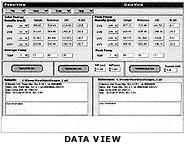
A Type J thermocouple probe is used for substrate temperature measurement. Temperatures from 0° to 500°C are recorded at 32 samples per second. This is an important function if curing is taking place on temperature sensitive substrates.
An over-temperature alarm alerts the user when the unit's internal temperature exceeds 65°C. This gives the user time to remove the unit from a thermally hostile environment before it overheats.
The UV PowerMAP and the UV MAP Plus are powered by nickel metal hydride (NiMH) batteries, which can be recharged approximately 500 times before needing replacement. An audible alarm sounds when the batteries need recharging.
Routine maintenance for the units consists of battery charging, cleaning, and returning the optics heads for routine calibration. Recharging is accomplished by a one-hour "quick" charge.
Keeping the optics clean is essential for getting proper measurement results, and it requires only cotton swabs and acetone. The case can be cleaned with isopropyl alcohol and a soft cloth.
Since the optics head disconnects from the DCU, only the optics head has to be returned for periodic calibration. It is connected to the collection unit by two mechanical pins and a row of electrical contacts, and locked into place by two setscrews. Another optics head may be purchased to avoid down time during recalibration or to upgrade from single to four-channel capability.
Summary
The UV PowerMAP and the UV MAP Plus have an enormous advantage over other UV measurement instruments on the market. Both allow the user to evaluate the entire lamp system to see how well it delivers UV light to the actual cure surface. Focused lamp systems with good reflectors typically cure more efficiently which is important considering that as much as 75% of the energy reaching the cure surface is reelected energy.
The collected data allows the user to adjust the curing process to ensure that the UV system is operating at maximum efficiency.
The data that is graphed can be archived for future reference or printed and attached to work orders for ISO or FDA audits. The historical data can be used to make comparisons between current runs and previous runs. UV lamps within a system can be compared to each other, or entirely different UV systems can be analyzed and compared.
EIT PowerMap能量計


批發市場僅提供代購諮詢服務,商品內容為廠商自行維護,若有發現不實、不合適或不正確內容,再請告知我們,查實即會請廠商修改或立即下架,謝謝。

